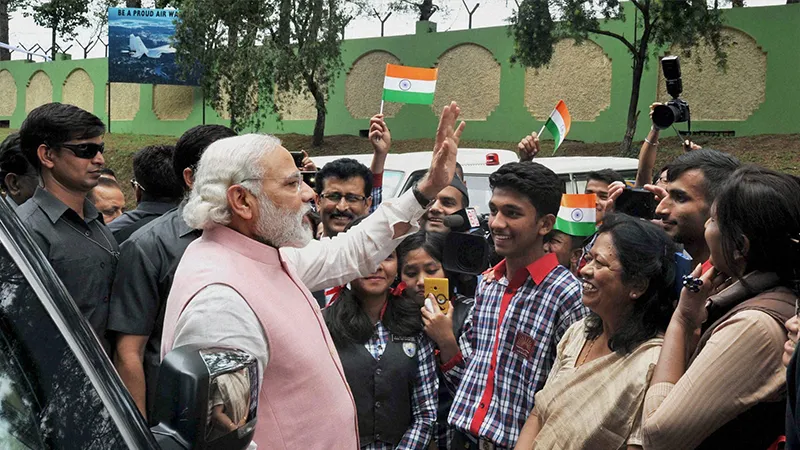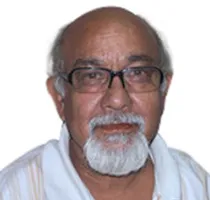The BJP-led NDA government of Prime Minister Narendra Modi has entered its third year in office, having completed two years in office on May 26.
The government has gone to town showcasing its achievements to citizens through massive outreach programmes which include media campaign, rallies, public meetings across the country where Union ministers will spend the day in public meetings with beneficiaries of government schemes and intellectuals. A total of 33 teams will hold such interactions in 198 cities till June 15.
Let us have a close look at the overall performance of the government because it is necessary that citizens are properly informed and are not carried away with the unprecedented government propaganda.
At the outset, credit must be given to the Modi government for maintaining the face of the world’s fastest growing economy despite two droughts and ending the policy paralysis of the UPA-II government, lifting the pall of gloom that was hanging over the country’s economy.
This task became all the more complex and difficult because of a global slowdown. But, at the same time, it was helped by the falling oil prices and low commodity prices in the global market.
An official brochure claims another plus to the NDA’s account for reducing the current account deficit and the fiscal deficit while keeping the inflation in control. But, it would obviously not inform that food inflation has remained high and has hovered around 20%.
By retaining the UPA government’s Aadhar card and MGNREGS programmes, the Modi government has taken some effective steps to reduce the subsidy burden which was threatening to become unmanageable.
A rate of 7.2% GDP growth has been achieved for 2014-15 but we should not overlook the fact that the NDA government right after assuming charge had changed the GDP calculation method.
The Wall Street Journal had commented on January 30, 2015 that the “dramatic revision could shake up the way the current trajectory of India’s economy is perceived both at home and abroad.”
The Statistics Ministry had said that after updating the base year used for marking trends in the economy and switching to a market price calculation of GDP, the economy grew by 6.9% in 2013-14. Using the previous methodology, GDP expansion that year was 4.7%.
Similarly, the FDI stood at $63 billion in 2015. The FDI equity inflow in the past 22 months (From June 2014 to March 2016) increased by approximately 42% as compared to the previous 22 months, says a government release.
The government has also launched several programmes like Swachh Bharat Abhiyan, Make in India, Smart City, Digital India, Jan Dhan, Sansad Adarsh Gram, Atal Pension, Awas Yojna, Jeevan Jyoti Beema, Mudra Bank, Garib Kalyan, Kaushal Vikas, Sukanya Samridhi, Digilocker Scheme and many more to target the poor and the deserving citizens for bettering their lives, but whether they indeed transform society and country would depend on the effective implementation of the programmes. The country, in the past, has suffered for want of effective policy implementation and it remains to be seen whether the Modi government would prove to be different than its predecessors.
All the government schemes are well intentioned but just how much management muscle the Modi government has remains to be seen and tested.
The government has claimed that it has empowered the poor, women, youth and the marginalised sections of society, but then all past governments have made similar claims. All such assertions by governments need to be taken not with a pinch of salt, but with a bagful of salt.
On the other hand, the Modi government has failed to push big time reforms to make the country’s economy competitive and now that it is entering its third year, it will become increasingly difficult to go for fresh ideas.
Domestic capital expenditure has not gone up which could create jobs in both organised as well as in unorganised sectors. The country needs to create a million jobs a month to provide employment to youth entering the job market and this would be difficult if the government failed to make the economy competitive. On job creation front, the government has obviously failed to keep its promise.
The government has done well in its transparent auctioning of spectrum, coal block allocation, minerals and private FM radio channels thus reducing crony capitalism.
At the same time, the government is being accused of promoting crony socialism in the name of poor and the weak, but then they are the ones who vote parties to power.
On the flip side, the government while seems to be doing well on hard physical infrastructure related issues, but on softer and equally significant areas like the human resource development and culture, it seems the responsibility for policy making and decision taking has been passed over to the Rashtriya Swayamsevak Sangh (RSS) which is calling shots in the Ministries of Human Resource Development and Culture.
It is not hidden from anyone that the RSS promotes the unconstitutional idea that India is a Hindu nation. This creates justified apprehensions and misgivings among the minorities.
The ruling party and the Prime Minister, instead of standing with the people around growth and better living standards, appear to be pursuing narrow agenda of dividing the society on communal lines for short term electoral gains.
The Prime Minister has miserably failed to control motor mouths and hate mongers of his party who damage his image and that of the party beyond repairs. Unfortunately, Modi has remained a relentless campaigner and has refused to become a statesman. He has been fleeting from one big event to another like he did in the 214 election campaign.
A direct consequence of the BJP and the Prime Minister approach is the weakening of an already fragile social peace and no country can grow in absence of social harmony.
On the foreign policy front, the Prime Minister by going to 40 odd countries has created good will and forged mutually beneficial ties which should serve well for pushing the economic agenda, but China, Pakistan and Nepal, the immediate neighbours, remain country’s concerns.
This commentary originally appeared in North India Kaleidoscope.
The views expressed above belong to the author(s). ORF research and analyses now available on Telegram! Click here to access our curated content — blogs, longforms and interviews.




 PREV
PREV


